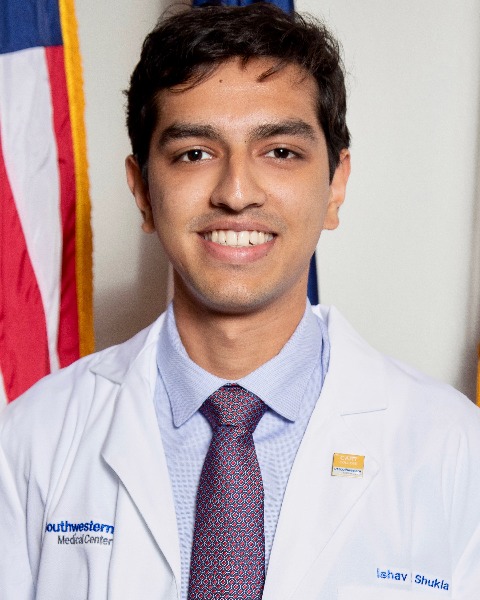Spine
Neck Hematoma Development following Anterior Cervical Discectomy and Fusion Surgery: A Systematic Literature Review
Neck Hematoma Development Following Anterior Cervical Discectomy and Fusion Surgery: A Systematic Literature Review

Ishav Shukla, B.S.
Medical Student
UT Southwestern
Dallas, TX, US
Presenting Author(s)
Introduction: Anterior cervical discectomy and fusion (ACDF) is a common procedure with complications like post-operative hematoma, which can cause airway compromise, dysphagia, and longer hospital stays. Proposed risk factors include patient demographics, surgical techniques, and comorbidities, but their association remains unclear. This review synthesizes existing literature to identify key risk factors associated with post-ACDF neck hematomas
Methods: A systematic review of the literature using PubMed, Google Scholar, and Web of Science databases was completed according to PRISMA guidelines.
Results: Our study analyzed 29 retrospective and prospective studies encompassing 224,931 patients. The mean age ranged from 48.1 to 73.0 years, with males comprising 53.2% (95% CI: 50.2-56.2). Comorbidities such as hypertension (45.1%, 95% CI: 38.7-51.4) and obesity (58.7%, 95% CI: 47.2-70.2) were common. The most prevalent clinical presentations included neck pain (81.2%, 95% CI: 77-85.4) and cervical radiculopathy (72.9%, 95% CI: 66.2-79.6). Single-level fusion was performed in 50.7% (95% CI: 38.8-62.6) of cases, particularly at the C5-C6 level (56.1%, 95% CI: 39.8-72.3), with multi-level fusion occurring in 17.9% (95% CI: 4.5-31.4). Post-operative neck hematomas were uncommon, with epidural, retropharyngeal, and subcutaneous hematomas each occurring in 0.2% of reported cases (95% CI: 0-0.4). Surgical evacuation was performed in 89.5% (95% CI: 86.8-92.1) of cases, with 71.3% (95% CI: 29.1-100) showing neurological improvement and 0.7% (95% CI: 0-1.7) experiencing deterioration. Hematoma-related mortality was low at 0.1% (95% CI: 0-0.1). However, patients with hematomas had a significantly higher mortality rate (7.27%, 95% CI: 4.9-9.7) than non-hematoma patients (0.09%, 95% CI: 0.02-0.16, p = 0.024) and were more prone to neurological decline.
Conclusion : Neck hematomas post-ACDF pose significant risks, requiring close monitoring and prompt intervention. Our findings highlight the need for standardized guidelines. Future research should focus on predictive modeling and advanced surgical techniques to improve risk assessment and patient safety.
Methods: A systematic review of the literature using PubMed, Google Scholar, and Web of Science databases was completed according to PRISMA guidelines.
Results: Our study analyzed 29 retrospective and prospective studies encompassing 224,931 patients. The mean age ranged from 48.1 to 73.0 years, with males comprising 53.2% (95% CI: 50.2-56.2). Comorbidities such as hypertension (45.1%, 95% CI: 38.7-51.4) and obesity (58.7%, 95% CI: 47.2-70.2) were common. The most prevalent clinical presentations included neck pain (81.2%, 95% CI: 77-85.4) and cervical radiculopathy (72.9%, 95% CI: 66.2-79.6). Single-level fusion was performed in 50.7% (95% CI: 38.8-62.6) of cases, particularly at the C5-C6 level (56.1%, 95% CI: 39.8-72.3), with multi-level fusion occurring in 17.9% (95% CI: 4.5-31.4). Post-operative neck hematomas were uncommon, with epidural, retropharyngeal, and subcutaneous hematomas each occurring in 0.2% of reported cases (95% CI: 0-0.4). Surgical evacuation was performed in 89.5% (95% CI: 86.8-92.1) of cases, with 71.3% (95% CI: 29.1-100) showing neurological improvement and 0.7% (95% CI: 0-1.7) experiencing deterioration. Hematoma-related mortality was low at 0.1% (95% CI: 0-0.1). However, patients with hematomas had a significantly higher mortality rate (7.27%, 95% CI: 4.9-9.7) than non-hematoma patients (0.09%, 95% CI: 0.02-0.16, p = 0.024) and were more prone to neurological decline.
Conclusion : Neck hematomas post-ACDF pose significant risks, requiring close monitoring and prompt intervention. Our findings highlight the need for standardized guidelines. Future research should focus on predictive modeling and advanced surgical techniques to improve risk assessment and patient safety.

.jpg)